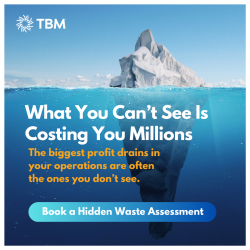Talent management strategies must evolve into proactive, insight-driven frameworks that align workforce capabilities with long-term business goals—addressing skill shortages, enabling internal mobility, and fostering resilient leadership from within.
How can organisations succeed in retaining top talent when nearly 65% of professionals are open to applying and interviewing for new opportunities this year?
Talent management has become more crucial than ever. With 80% of employers facing skills shortages, businesses must prioritise attracting and retaining top talent. It involves offering competitive salaries and creating a supportive work environment with employee well-being and professional growth.
Strategic workforce planning in talent management is essential for organisational success. Over half of HR professionals identify employee retention as their primary challenge. Besides, many new hires leave within the first 12 weeks, which shows the need for effective onboarding and engagement strategies. Investing in employee development, promoting internal mobility, and creating a positive workplace culture are key factors in keeping skilled professionals.
In the 21st century, where leadership development, flexibility and continuous learning are highly valued, organisations must adapt to meet these expectations. Providing upskilling and career advancement opportunities improves employee satisfaction and addresses the widening skills gap.
Creating A Smarter Approach to Talent in Today’s Workplace
First, strategic workforce planning has developed from a back-office HR function to a central spot of business success. As industries adapt with digital disruption, demographic shifts, and changing employee expectations, companies must move from reactive hiring to proactively thinking about the people they will need tomorrow, next year, and five years from now. Modern employee engagement strategies are no longer mainly about filling vacancies, but creating an adaptable workforce that aligns with long-term business objectives.
Today’s strategic talent management process is based on data, insight, and understanding of operational goals to predict talent gaps and respond with agility. Whether building leadership pipelines, supporting internal mobility, or preparing for emerging skill sets, the aim is to ensure the right people are in the right roles at the right time. The most successful organisations are those that integrate workforce planning into decision-making at every level, creating flexibility without compromising stability.
In short, the future of talent management will rely on collaboration, technology, and a deeper focus on people. The emphasis will shift toward talent ecosystems, considering current employees, contractors, gig workers, future hires, and even the potential of automation.
Companies that are ready to adapt to change will shape it. While the strategies may vary, the goal remains identical: engage people, align talent to purpose, and make smarter decisions that move the business forward.
A natural shift will happen if you prioritise hiring the right people, developing and engaging. In light of this, it’s essential to explore strategies that reflect the needs of today’s workforce and support long-term business goals. Let’s explore some strategies:
Align talent goals with long-term business strategy
When talent management is treated as a strategic function, it helps ensure that every role, skill, and capability is purposefully developed to support the organisation’s future direction. This alignment provides clarity for leadership and employees, allowing for smarter recruitment, targeted development, and more meaningful career progression.
Use data-driven workforce planning
Rather than relying on instinct or outdated approaches, data-driven workforce planning provides real-time insights to forecast future talent needs, identify skill gaps, and support smarter resourcing decisions. It helps leaders to plan with accuracy, whether scaling up, restructuring, or investing in new capabilities, by aligning people strategies with actual business data. It helps to connect workforce trends with long-term goals.
Create a culture of continuous improvement and learning
Creating a mindset of curiosity and development keeps people and teams adaptable. This culture encourages people to challenge, seek feedback, and invest in skill growth for collective success. It also builds engagement, as employees feel more valued and capable when learning is integrated into the flow of work.
Prioritise internal mobility and succession planning
Prioritising internal mobility and succession planning is a forward-thinking strategy that maximises the value of existing talent while preparing the organisation for future leadership needs. Instead of constantly looking to fill roles, internal mobility encourages the development and progression of current employees who already understand the business, its culture, and its customers. It reduces recruitment costs and onboarding time and boosts retention, as employees are more likely to stay when they see clear, achievable career growth. To learn how to systematically develop future-ready leaders from within—starting at the shop floor—read our full article on building a leadership pipeline.
Build leadership development programmes tailored to future needs
Tailored programmes identify key competencies needed for tomorrow’s environment. It can be digital fluency, cross-functional collaboration, or adaptive thinking. It helps create confident, capable leadership at every level, ready to guide teams through uncertainty and change. When future readiness becomes a leadership standard, the result is a more agile, forward-focused workforce to deliver long-term value.
Integrate digital tools to improve talent visibility and engagement
Whether through talent dashboards, learning management systems, or collaboration tools, technology enables a more transparent and data-informed approach to people development. When employees have access to personalised development plans, performance feedback, and communication channels, they feel more connected. When used strategically, these tools strengthen workforce planning and day-to-day people management.
Design employee experience around flexibility and purpose
Offering flexibility in where, when, and how people work acknowledges individual needs and builds trust, while purpose-driven work connects employees to something bigger. This combination supports well-being and improves motivation and loyalty. From a strategic perspective, tailoring the employee experience in this way boosts engagement and performance. Discover how to strengthen workforce engagement in this related article.
Partner with strategic workforce advisors to discover talent potential
Professional advisors bring insight, structure, and external perspective, helping businesses align their talent strategy with long-term objectives, identify hidden strengths, and address capability gaps. With expertise in areas like workforce planning, leadership development, and continuous improvement, they provide the tools to transform talent management into growth. Explore how our leadership solutions can help you unlock talent potential and drive sustainable growth.
Make Talent Management Your Growth Engine
Choosing the right talent management strategy is not optional, but business-critical. Companies need more than quick fixes in a workforce shaped by shifting expectations, hybrid models, and rapid innovation. A well-chosen strategy attracts top talent, boosting engagement, improving productivity, and building stability across the company. Without a clear direction, even the most skilled teams can lose alignment with broader business goals.
Businesses must take a structured and adaptable approach to make talent a competitive advantage. For companies seeking expert guidance on this journey, using a trusted partner like TBM’s continuous improvement consultants can offer the tools, structure, and support needed to translate talent strategies into real performance.






